
In heavy terrain, Rüdebusch uses the Arocs
Economics & Logistics
When driving in heavy terrain, Rüdebusch uses the Arocs. That fits the bill for the dynamic and expanding transport and construction specialists from Braunschweig, for whom stagnation is not an option.
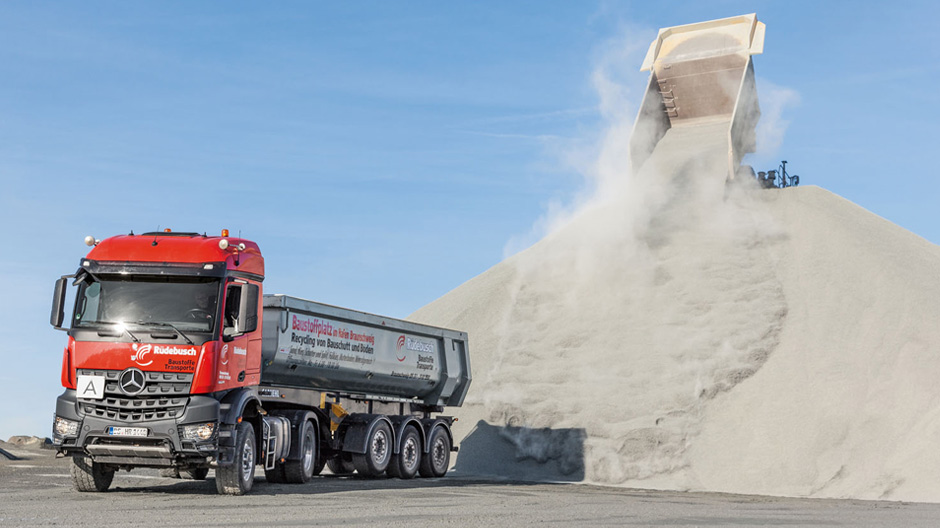
Dumped. A 'Dumper' unloads some fresh material – the Arocs stands ready to load it.
If you look at the anthracite-coloured grit, ploughed into furrows under your feet, or stand a few steps further at the upper lip of the awe-inspiring crater and ignore the thin line of coniferous forest on the horizon – you could be forgiven for thinking that you have landed on the moon. Where a dark-red moon vehicle is in the process of manoeuvring its way through the landscape, making tyre imprints in the ground. Of course, in reality, the scene isn't really taking place beyond the earth's atmosphere. And yet, the backdrop is impressive: Diabaswerk Huneberg, a quarry near Bad Harzburg in the south of Lower Saxony. The 'Moon vehicle' in operation?: an Arocs all-wheel tractor unit with tipper body. A wheel loader has just filled the tipper body – with the finely granulated grit piled up to form a kind of mountain landscape. "Diabase is a typical stone here in the Harz region. It is hard and resistant. That's why it is used as a base material for roads or for the manufacture of asphalt," explains Arne Buhle, the man sitting at the wheel of the Arocs.
It isn't the only truck which Buhle's bosses, Hans-Hermann Rüdebusch and his son Wieland, have ordered for their family business, no - they have ordered no less than twenty-eight Arocs. As well as double-axle all-wheel semitrailers, three-axle dump trucks are also part of the fleet. All the Arocs have an output of 330 kW. Altogether, the fleet of the Braunschweig company is home to more than 210 heavy-duty trucks – almost all of them sporting the star on the radiator grille. Journeys like today's where bulk goods are transported for road construction and public works projects are standard.
"We ordered the Arocs as soon as it was available – because we trust the Mercedes-Benz brand," explains junior manager Wieland Rüdebusch. An investment which the truck quickly repaid. "It's a really good construction site and off-road vehicle which has no problems getting through even on clayey and deep underground," says the 32-year old. On top of that, the Arocs' fuel consumption is 'sensational'. "We can make tremendous savings off-road but also on hilly routes!"
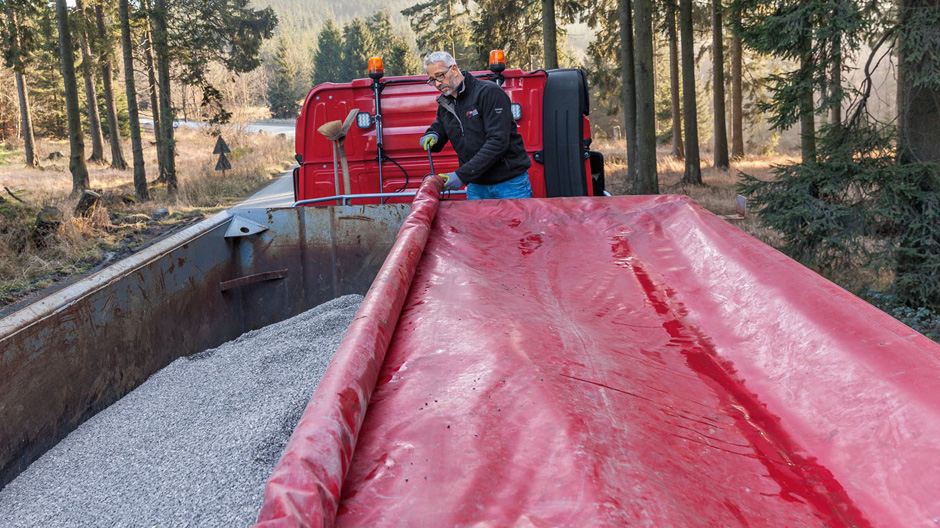
Covered-up. Rüdebusch employee, Arne Buhle, uses a tarpaulin to prevent freight being blown out of the tipper body.
Arne Buhle can confirm that: part of his job is to train his roughly 250 driver colleagues. "Depending on how tough the job at hand is, a well-instructed driver can operate the Arocs at an average consumption of between thirty-two and thirty-five litres." To measure consumption, all trucks in the company are fitted with the FleetBoard Performance Analysis. In the quarry, Buhle has just driven the loaded truck onto the weighing machine: a total weight of almost exactly forty tonnes shows in the digital display. Now he stretches a tarpaulin over the load and ties it down on both sides of the tipper body with straps. Ready to drive the sixty-five plus kilometres back to Braunschweig.
Which is where Hans-Hermann Rüdebusch founded the company in 1978 with one single truck. Since then, the insurance salesman has continuously expanded the company. Around ten years ago, his son Wieland joined him. Along with new employees and trucks came branch offices in Saxony-Anhalt, Thuringia and Hesse and more and more new services.
Today the company transports a wide variety of goods – predominantly, but not exclusively for construction projects: machines on low loaders, dusty and powdery goods in silos, liquid bitumen for asphalt manufacture in tank semitrailers, fresh and still hot asphalt in fully insulated dump trucks on the basis of the Actros. Since 2012, a container service has been part of the portfolio, complete with recycling centre for the reutilisation of rubble and construction site waste. The company which was set up for this purpose has the tongue-in-cheek name Dreckspatz (mudlark) and is run by Marlene Rüdebusch. The daughter of the parent company, so to speak.
"In the construction business, everything is always on the move – that's why we have to stay moving at all times," says the senior boss – stagnation is not an option. All the same, demand is assessed precisely before new services are introduced. "Something which is being requested more and more is the removal of soil excavation from building sites." This often involves difficult terrain and is one area in which the Arocs gives us a real advantage. The excavation earth, depending on the result of the obligatory soil sample, is either reconditioned or is driven to the soil landfill site. The company possesses both the certification as a specialist disposal firm as well as its own landfill site. That shows: Rüdebusch is more than just a transport company. "We draw up disposal and remediation plans and also take care of the prescribed documentation," says the senior boss. "If we were a small company, we wouldn't be able to offer that service." That sentence also applies to the operation of two gravel pits, the company's own storage facilities and to two driving schools teaching all classes of driving licence and run by Inga Rüdebusch. Since 2012, they have been operating "Braunschweig's first service station for concrete" as they call it, and, since 2013, equipment for treating asphalt and railway ballast. "We want to offer our customers the whole range of services."
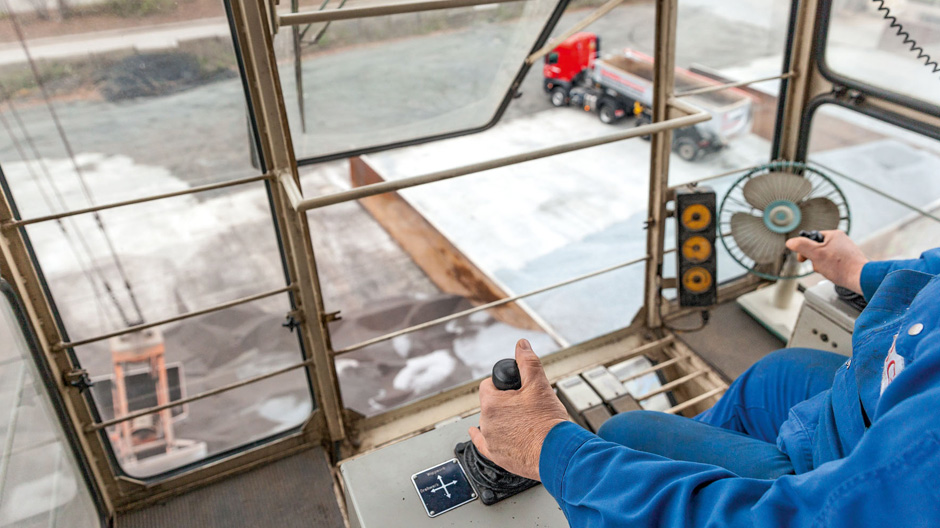
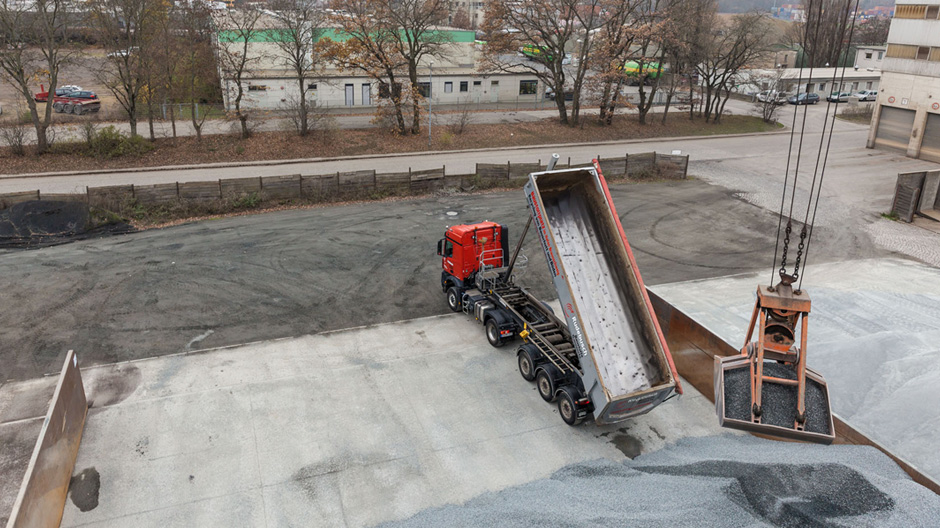
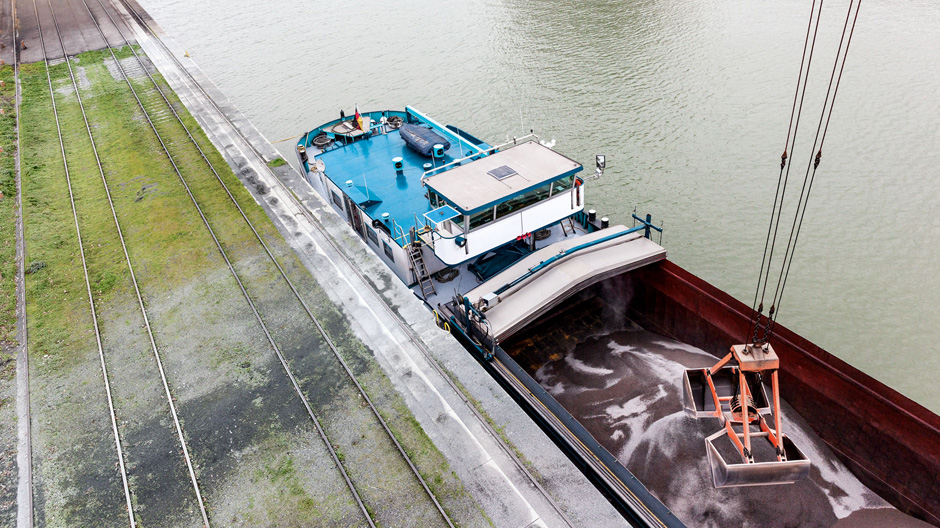
For a number of years now, the Rüdebuschs have, in addition, been operating one means of transport which not many logistic companies of their size possess: a barge; the near eighty-six metre long "Inga R.". "It operates on waterways in Germany and in the Netherlands," says Wieland Rüdebusch. "The most important route where we have fixed itineraries runs from Braunschweig Port to Hamburg." The capacity is around 1400 tonnes of bulk material such as gravel – or diabase grit. Arne Buhle's journey with the red Arocs also takes him to "Inga R.". Just as the sun goes down, he presses a button and the tipper body behind the cabin swings upwards. With a gentle rushing sound, the grit slides out into the "box" next to the quay wall. The next morning, the freight is loaded by crane and "Inga R." sets off for Hamburg – via the Mittelland Canal, the Elbe Lateral Canal and the Elbe itself. Destination of the vessel in the Hanseatic City? An asphalt mixing plant. By then, the Arocs fleet will also be on the move again – but most likely without asphalt under their tyres.
Photos: Tom Roelecke




Comment
Please log in to post a comment.
No comments yet